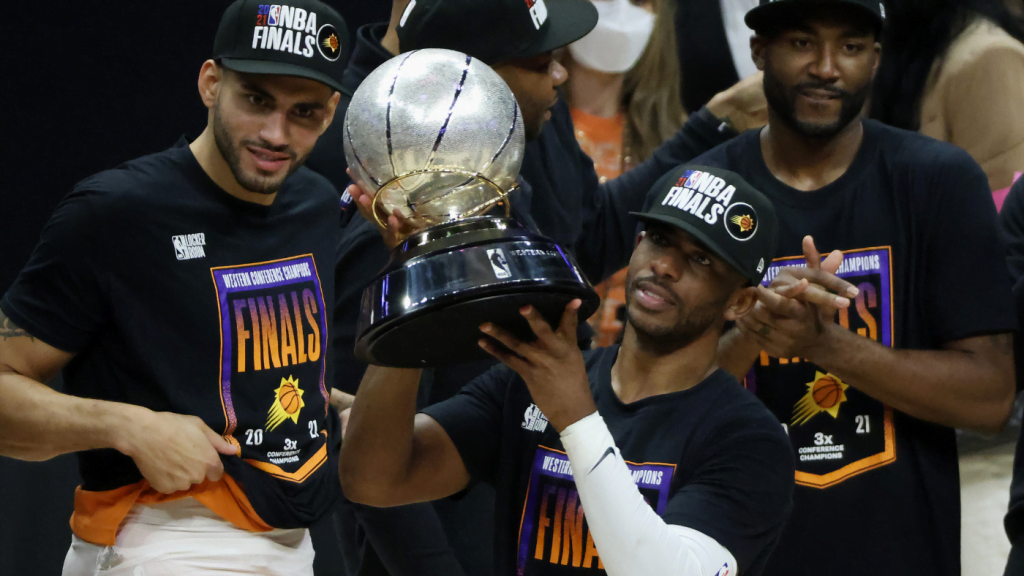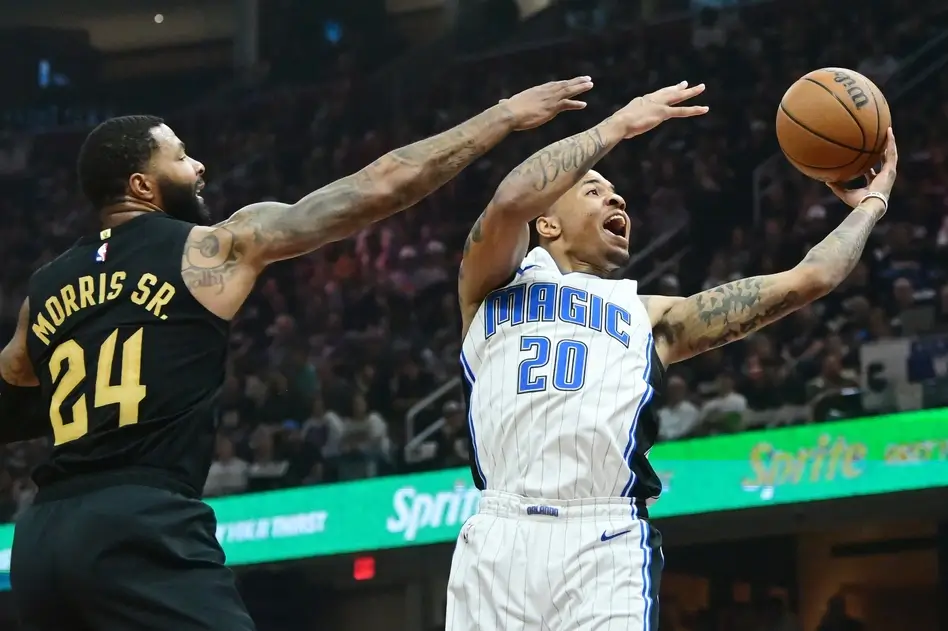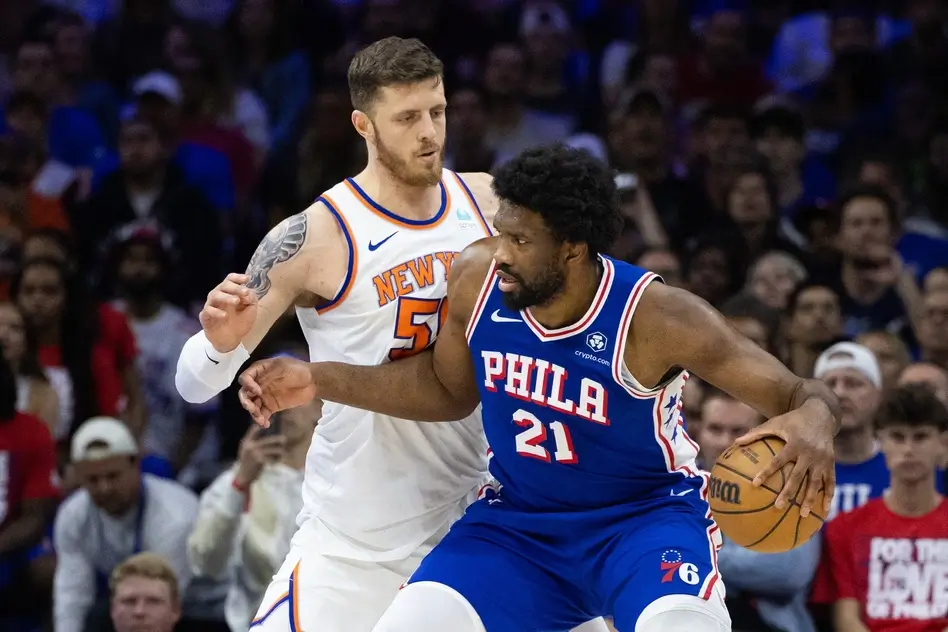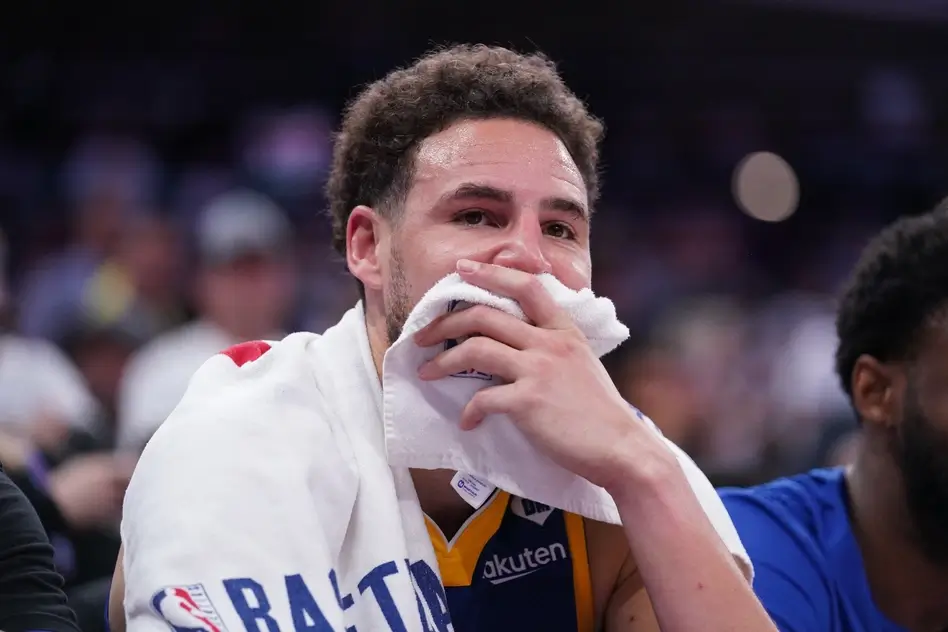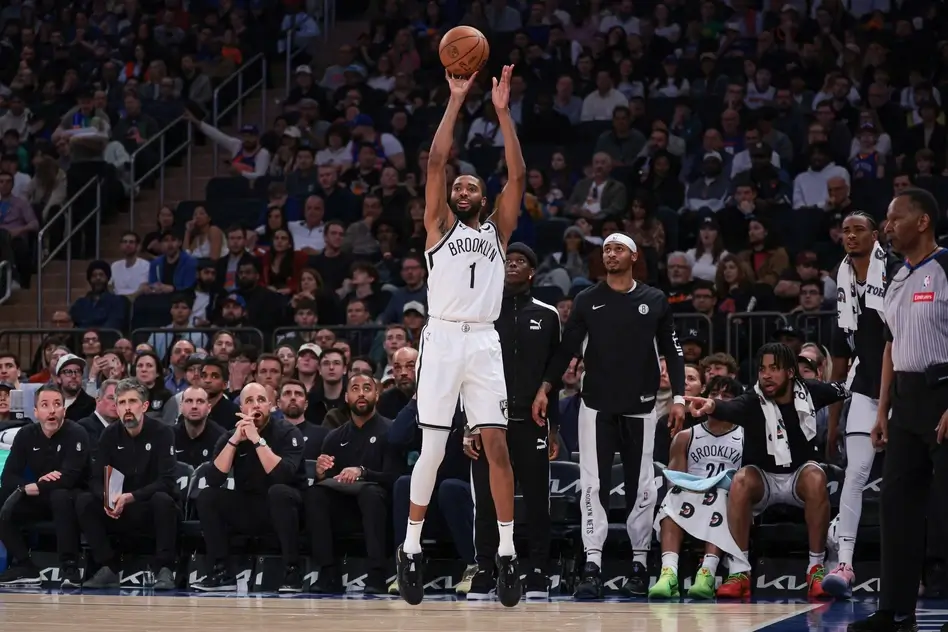The Phoenix Suns have stunned spectators in their first Playoff appearance since 2010. Phoenix only lost 4 games en route to the Finals.
The Suns swept the Nuggets in 4 and conquered LA, dethroning the reigning champs in 6 and handing the same fate to the Clippers.
Phoenix have carried their regular season form into the postseason. The start of their success dates back to the end of last season when the young Suns went 8-0 in the NBA Bubble.
This team led by its stars, Devin Booker and Chris Paul, have proven they can perform under-pressure: whether that be the bright lights of the Playoffs or the intense Bubble environment. And while Paul and Booker have been grabbing all the headlines, it is the performances of the Phoenix Suns role players that have made them a true contender this year.
Prior to the postseason many articulated that the Suns were dependant on their all-star backcourt, but that is a disservice to Phoenix’s complimentary pieces. None more so than Deandre Ayton. Ayton has become the poster boy for the Suns’ ‘role players’ elevating their games. Phoenix’s “two-man team” has quickly become a formidable “Big 3” with Ayton contributing like an all-star calibre centre.
Monty Williams’ 0.5-second Offense
During the Conference Finals, Reggie Miller credited the Phoenix Suns success to the collective group saying, “there are no egos on this team”.
Miller’s point was short but accurate! Every player can rely on one another to make a play or shot. This ties with Monty Williams’ 0.5-second offense, which places emphasis on sharing the ball.
Coach Williams said, “I know our guys are going to try and make the right plays so you either shoot it, pass it or drive it. Just don’t hold the ball. And, it has to happen in 0.5-seconds. We’ll play faster because of that. We trust our guys to make quick decisions, I’m not going to get on them about the type of shot, I just want us to play with pace and, most importantly, together”.
The Suns’ recruitment strategy also aligns with their offensive philosophy, “James and I know the kinds of guys we want in our system. Guys who make the right plays from a basketball standpoint, they know how to work, how to handle a video session and they can play in .5”.
The Big Man from The Bahamas
Deandre Ayton has shown he’s now an elite two-way player. He’s been praised by Phoenix head coach, Monty Williams, who called Ayton the Suns’ “anchor on defence”.
Williams said, “D.A does a good job of just making people shoot over length without fouling. He has the ability to protect the rim, guard his man one-on-one, and he’s shown the ability to guard smaller guys. He’s a versatile defender for us”.
In the postseason, the 22-year-old has held his opponents [the likes of Anthony Davis, Nikola Jokic, Ivica Zubac, Andre Drummond, Paul George and LeBron James] to 38% from the field.
He has been influential in the Finals too. The Suns are +20 when Ayton is on the floor without Giannis and -21 when Giannis is on without Ayton.
The scores are tied when both are on together. The Bahamas native is the closest thing to a Giannis stopper in the league. Ayton withstands the signature Giannis drive to the basket by absorbing contact and forcing the Greek Freak to take jumpers or fadeaways.
Ayton’s versatility has been on display. The former No.1 pick moves his feet quickly to stay in front of guards and uses his length to disrupt their shots.
He’s vastly improved defending the pick and roll, dropping back to protect the rim but also manipulating guards to make quick – and often wrong – decisions. The Phoenix Suns ranked 5th in defensive rating. That statistic is testament to Ayton’s improvement on that end. Offensively, the Suns big man is a force. This season, Ayton recorded career lows in shots and points-per-game, but he influenced the offense by setting screens. During the regular season, Paul and Ayton combined to run the pick-and-roll more than any other combo in the NBA.
The Swiss Army knife
Mikal Bridges is arguably the best ‘role’ player in the NBA. He defends at a high-level, shoots efficiently from 3, he’s an excellent off-ball cutter and consistently makes the right read.
Bridges is the model all-NBA defender. He has a unique blend of length, quickness, intelligence and toughness.
The 6’8 wing can harass speedy guards with his quick lateral movements, then using his freakish wingspan to block their shots. You often find Bridges rotating on to multiple players in one possession. He has the hustle to fight over screens as well as the presence of mind to stay active with his hands and be an on-ball pest.
The Villanova product has been integral to Phoenix’s success by guarding the opposing team’s best perimeter scorer. He was 4th in ‘matchup difficulty ranking’ – a metric that assesses the quality of player a defender is matched up against.
What Bridges brings on offense
Bridges has been branded a ‘3&D’ player, but he told Kevin O’Connor of The Ringer that he’s not a fan of that label.
He explained the 3 in “3&D” is not an adequate way of describing his play, “All labelling is just putting someone in a box. I’m trying to expand the box and try to do everything”.
As well as being a sniper from deep [42.5% from 4.5 attempts per game this season], Mikal is also an excellent cutter.
Bridges said, “I feel like cutting is one of the best parts of my game. If I’m in the corner, I might not get it, so the defence might relax. So, I act like I’m just standing there, doing nothing then I make a quick move”. He continued to explain how he’s able to take advantage of match-ups, “usually, the other team put their best offensive player on me because they want him to get a rest on defence. So, I try and make them work of defence”.
An underrated aspect of Bridges game is his high basketball IQ. He ranked 2nd amongst wings in assist to turnover ratio. Bridges has thrived in the 0.5-second offense coach Williams has introduced.
Savvy veteran
Crowder’s play often goes unnoticed, but he might deserve the most credit for this team’s turnaround from a non-playoff team to one in the hunt for a championship.
The veteran is playing in his second consecutive Finals and has provided the necessary experience for this young Suns roster.
He explained his role to Sky Sports, “It was big for our group to put some leaders around the guys that are younger and haven’t been in as many big games”.
Whenever this young group is asked about the leadership of Chris Paul, all of them are quick to add Crowder in as another key voice.
He offers advice for on-court situations and leads by example with his willingness to guard any player and pass the ball to create open shots. He’s also first to congratulate his teammates whenever they do something well.
Crowder brings a toughness on the defensive end. In this series, he has guarded every member of the Milwaukee Bucks.
Jae Crowder said, “as a player, I bring a winning environment, I just want to do whatever it takes to win. Whatever is needed, that’s what I’ll bring to any team”.
In the Finals, Crowder has been asked to deliver from 3 and he has not disappointed. He’s converted 14 of his 30 attempts (47%).
Youngster beyond his years
Cameron Johnson has shone in his limited minutes off the bench. Johnson was labelled a sharpshooter with little upside in the 2019 NBA Draft, but his play has shown he’s more than that.
Johnson brings a threat every night with his shooting efficiency. The North Carolina alumni is shooting 45% from downtown in the Playoffs.
When he gets given an open shot, especially from the corner, I call cash as soon as the ball hits his hands. It seems inevitable that the ball goes in. Johnson’s merits don’t stop at his shooting, he’s also excellent at getting open.
Jeff Van Gundy said, “Johnson just knows how to move without the ball. He’s a really smart player”.
The Suns were slated for selecting Johnson with the 11th overall pick. “Overdraft” so-called ‘experts’ said.
The knock at the time was his age, Johnson was a 23-year-old rookie. But that same criticism is being celebrated today. Now, Johnson is playing a critical role in Phoenix’s success, proving the importance of those players with “high floors”.
Johnson is earning $4.2 million in 2020/21, $4.4 million in 2021/22 & $5.9 million in 22/23, way below what he’d be making if he were a free agent this year. He is a veteran playing on a rookie deal. Excellent business from the Phoenix Suns.
Culture change
Suns General Manager James Jones needs to be worshipped in Arizona for constructing a deep squad that can contribute in opportune times. When Jones joined Phoenix, the Suns had the 2nd worst record in the NBA. In just two years, he has transformed a 21-61 team into a 51-21 Conference Champion.
He has made bold calls along the way. His first was trading away T.J. Warren and the 32nd pick for cash. His second was trading down from 6 to 11 in the 2019 Draft and subsequently, “reaching” for Cameron Johnson with the 11th overall pick. Contrary to popular belief and the consensus opinion, Jones selected the player he liked the most and one that he thought would benefit his team. His latest bold call was trading away Kelly Oubre, Ricky Rubio and a 2022 1st Rounder for a 36-year-old Chris Paul who had a $40 million contract. That decision has clearly paid off.
The Phoenix Suns currently trail 3-2 to the Milwaukee Bucks in the NBA Finals. If the Phoenix Suns stand any chance of overcoming Giannis and the Bucks their role players need to deliver once again in Games 6 & 7.
[spreaker type=player resource=”show_id=4112709″ width=”100%” height=”200px” theme=”light” playlist=”false” playlist-continuous=”false” chapters-image=”true” episode-image-position=”right” hide-logo=”false” hide-likes=”false” hide-comments=”false” hide-sharing=”false” hide-download=”true”]


